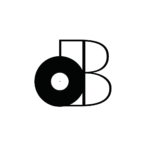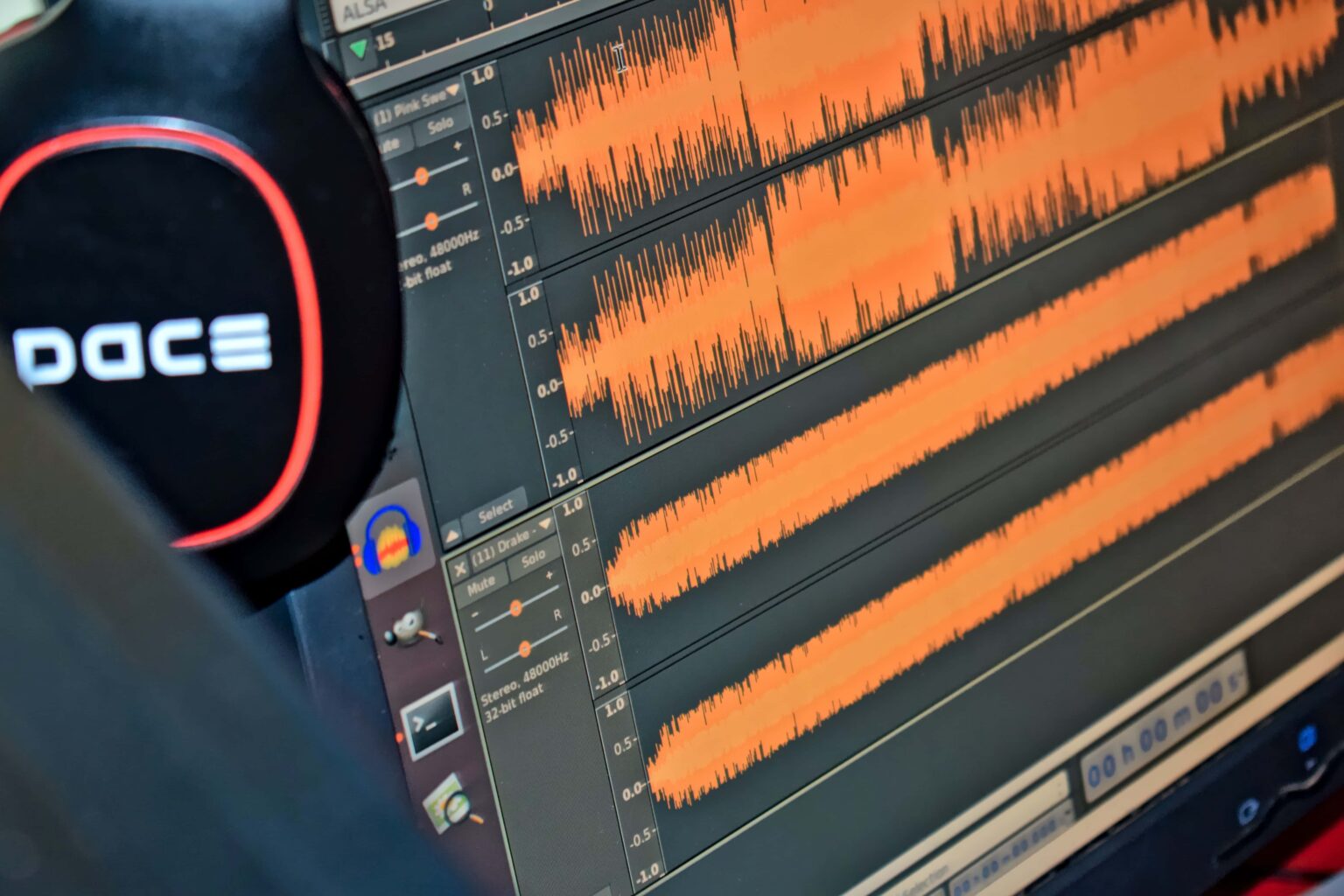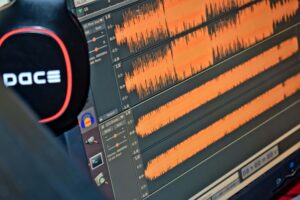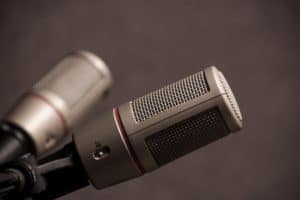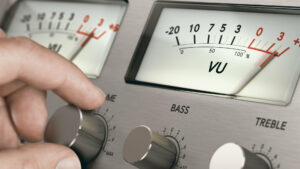Picture-this… You have several pieces of wood with rough edges, but only the ones that have been cut into smaller pieces.
Similarly, the lower amplitudes of digital audio get rougher when we reduce the bit-depth.
Now, think about audio dithering as using a belt-sander. It adjusts its roughness based on how much wood was cut off (Ex. 24-bit to 16-bit).
Here’s a cool widget that’ll help you visualize audio dithering…
See the Pen Untitled by Stefan Chamberland (@stefanchamberland) on CodePen.
Your audio is your masterpiece, and you wouldn’t want to hand over an unpolished piece of work, right? Use audio dithering in your masters to smooth out those rough spots in the quieter amplitudes. This is the secret to achieving a professional, polished sound that you can proudly present!
Today, I’ll be showing you how to diter audio and so much more…
Table of Contents
Bit-Depth 101
Bit-depth is essentially the measurement of the precision with which amplitudes of a waveform are represented digitally.
In simpler terms, it dictates the range of values a digital audio signal can have. Higher bit-depths allow for larger dynamic ranges (quietest-loudest).
- Lower Bit-Depth (e.g., 16-bit): Commonly found in CD audio, lower bit-depths can represent a limited range of values. While suitable for many scenarios, they might struggle to capture the full richness and subtleties of complex audio recordings.
- Higher Bit-Depth (e.g., 24-bit): Widely embraced in professional audio recording, a higher bit-depth provides a more expansive canvas for audio representation. This allows for meticulous capturing of minute details, preserving the authenticity and depth of the original recording.
Dithering in Music Mastering
From 24-bit to 16-bit
Imagine a musical masterpiece recorded with meticulous precision at 24-bit depth, a canvas rich with dynamic range. However, when the time comes to export this masterpiece to a standard CD format at 16-bit depth and 44.1 KHz, a conundrum arises. Enter dithering, the maestro of resolution conversion.
Dithering in music mastering serves as the translator between these different bit depths. It introduces a controlled amount of noise (randomization) to the lower 16 bits, smoothing the transition and preventing quantization errors. This meticulous process ensures that the delicate nuances and subtleties of the original recording remain somewhat intact, with as little distortion as possible.
Dithering in Film Mixing
From 32-bit (fixed) to 24-bit
In the realm of film mixing, the stakes are high, and audio quality is paramount. Imagine a scenario where sound effects are captured at bit-depths as high as 32-bit (fixed point), but the final export demands a more conventional 24-bit depth. This is where the strategic application of dithering enters the cinematic stage.
It’s crucial to note the distinction between 32-bit fixed-point and 32-bit floating-point audio (what location sound is usually recorded at).
32-bit (float) and adjust itself to any bit-depth so you’ll only need to worry about fixed point bit-depths!
Audio Dithering Algorithms
In the intricate world of audio mastering, the choice of dithering algorithms shapes the final sonic tapestry. Diving into the realm of algorithms, we encounter two primary categories: Flat TPDF (Triangular Probability Density Function) algorithms and those with sophisticated noise shaping. The nuances between these approaches carry profound implications for audio quality, underscoring the importance of employing high-quality dithering plugins.
Flat TPDF Algorithms
- Simplicity in Noise: Flat TPDF algorithms, exemplified by the Triangular Probability Density Function, introduce a uniform amount of noise across all frequencies. This simplicity ensures a straightforward and consistent application of dithering throughout the audio spectrum.
- Universal Application: The beauty of flat TPDF algorithms lies in their versatility. They are well-suited for a wide range of audio material, offering a balanced approach to dithering without favoring specific frequencies. This universal application makes them a reliable choice for scenarios where a neutral and consistent noise floor is desired.
Advanced Noise Shaping
- Sculpting the Noise Floor: Contrasting with flat TPDF, advanced noise shaping algorithms embark on a more sophisticated journey. These algorithms analyze the audio signal and strategically apply varying amounts of dithering to different frequency bands. The goal is to shape the noise floor in a way that minimizes perceptual artifacts, enhancing the overall listening experience.
- Contextual Precision: By adapting the dithering intensity based on the characteristics of the audio content, noise shaping algorithms aim for a more nuanced and transparent result. This contextual precision is particularly valuable in situations where maintaining the subtleties of quiet passages is paramount.
Dithering in Logic Pro X
In Logic Pro X, it’s very simple…
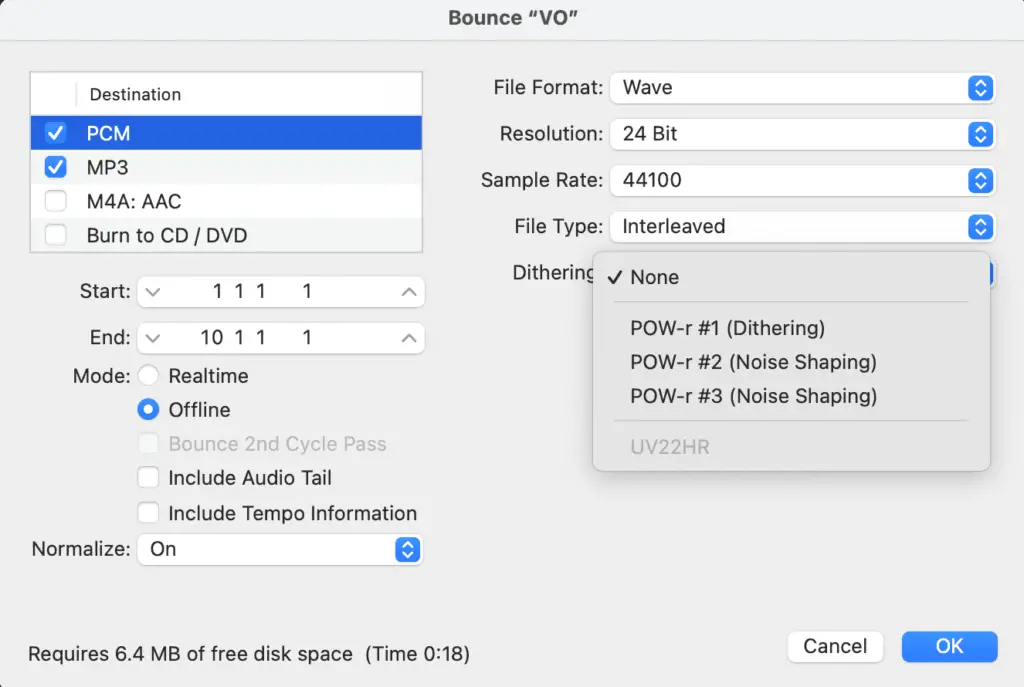
It’ll automatically adjust itself to match the bit-depth you chose for export.
Notice that you’ll have the option to choose between three different dithering algorithms. POW-r #1 is TPDF and the other two offer noise shaping.
Dithering in Pro Tools
There are many ways to dither in Pro Tools, but the easiest is to use the Maximizer on your master fader…
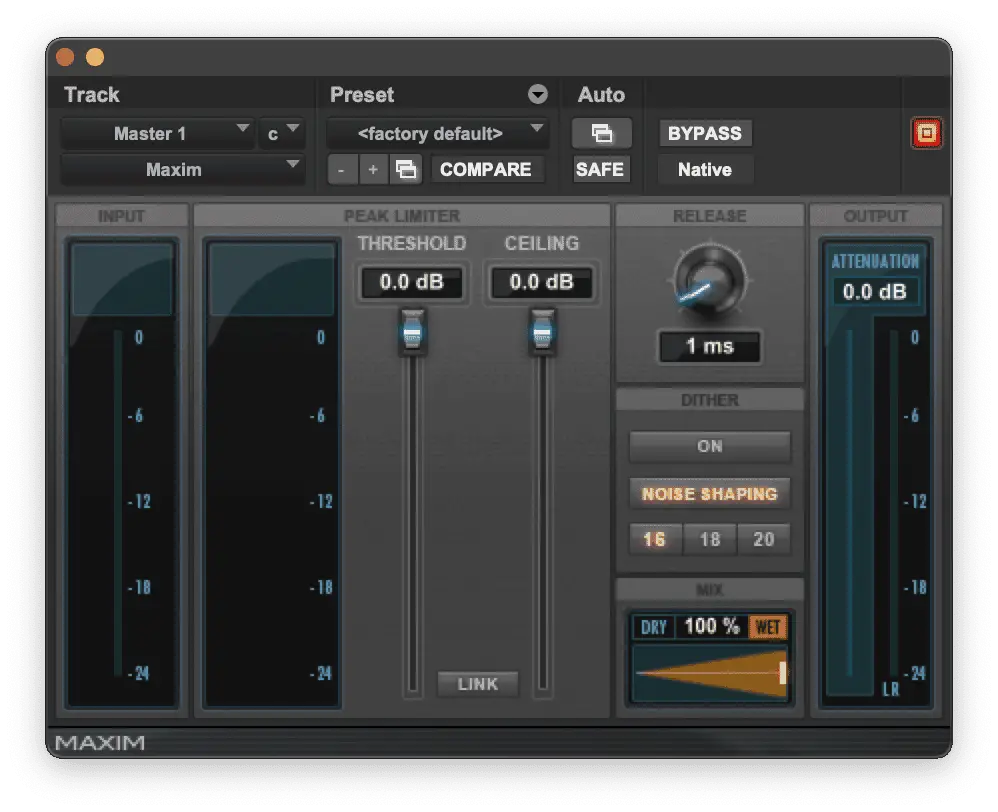
You can choose between 16, 18 and 20-bits of added noise. You even have the option to add noise shaping!
To top it all off, you can also mix the wet version of the signal with the dry. Pretty cool!
But, you can also choose one of the dedicated dithering plugins in Pro Tools…
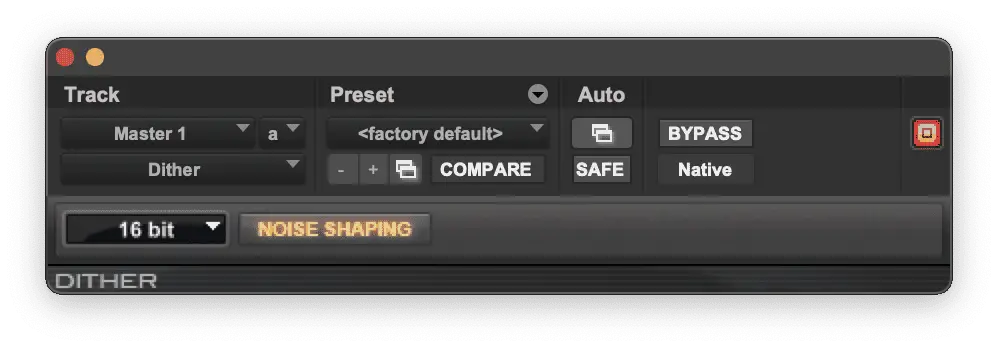
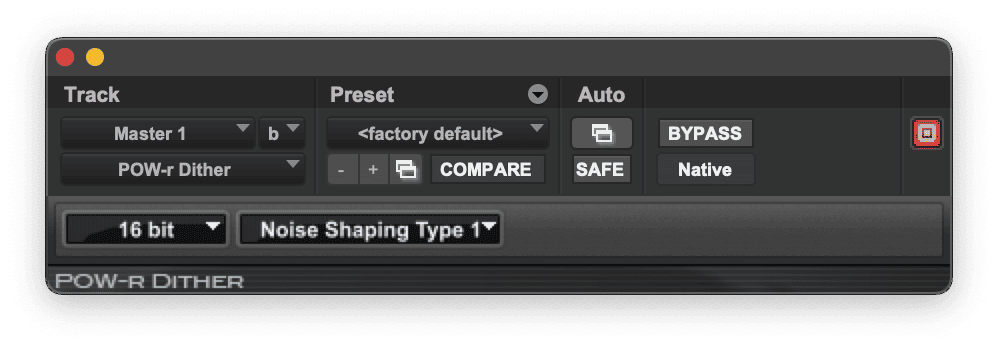
The regular dither has noise shaping and the Pow-R dither is TPDF.
But, what about using a dithering plugin form a 3rd party?
3rd Party Dithering Algorithms and Plugins
In the intricate world of audio mastering, the choice of dithering algorithms and plugins plays a pivotal role in shaping your final sonic tapestry.
As you’ve learned… Audio dithering has THOUSANDS of different algorithms, each with its unique characteristics.
Some advanced algorithms, like those employed in plugins such as Goodhertz “Good Dither,” go beyond mere noise addition. They intelligently manage and shape the noise floor, removing perceptual artifacts and ensuring a seamless transition between different bit depths.
Remarkably, certain algorithms can eliminate up to 8dB of perceived noise, offering a delicate balance between preserving audio fidelity and minimizing unwanted artifacts.
Here are some noteworthy dither plugins that stand out in the realm of audio mastering:
Summary: What is Dithering in Audio?
Today, we’ve uncovered the art of audio dithering, comparing it to a craftsman smoothing rough edges.
Our journey into the realm of audio dithering has unraveled the secrets to achieving a polished sound. From mastering our understanding of bit-depth to exploring advanced dithering algorithms like the one in Goodhertz’s “Good Dither”.
Now, armed with step-by-step guides, it’s time to take action!
Embrace the art of dithering in Logic Pro X and Pro Tools, and confidently export your audio masterpiece into a professional product.
Let us know what you think and which dithering plugin you like to use!
